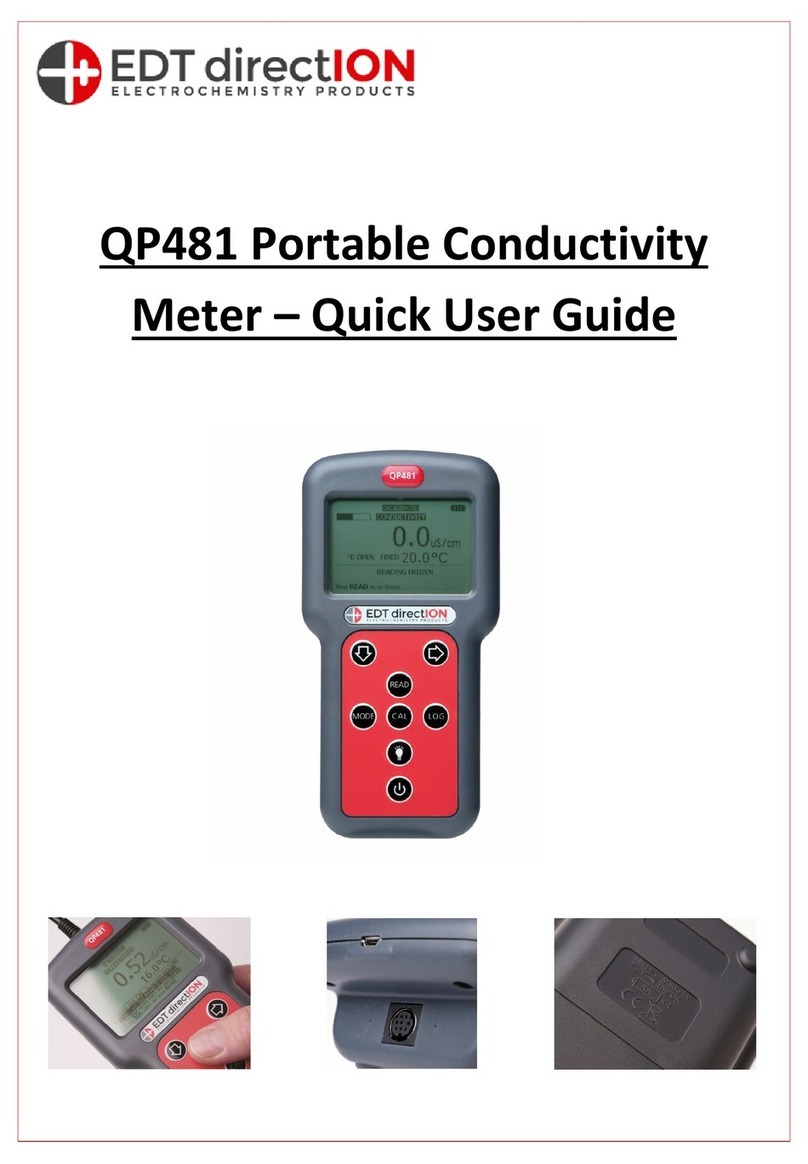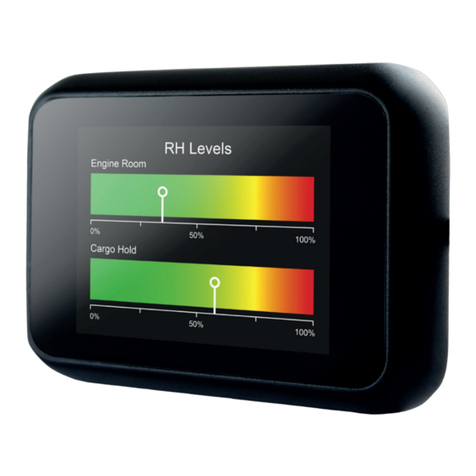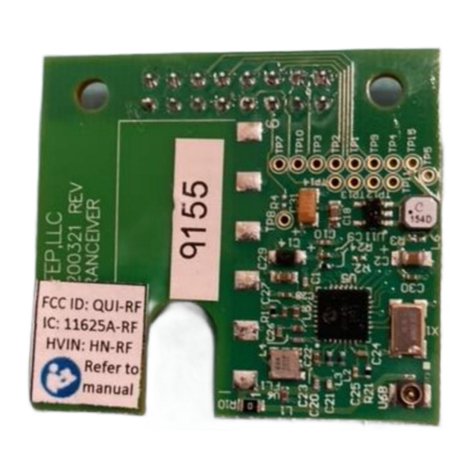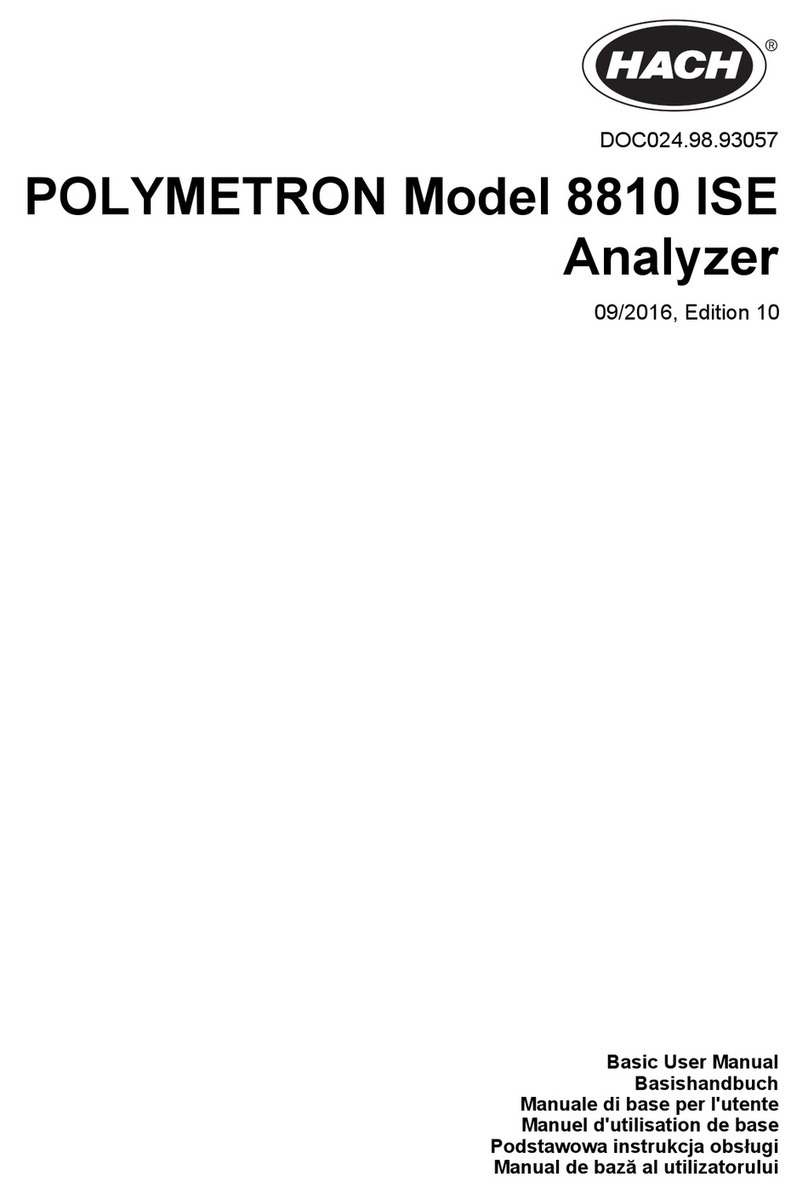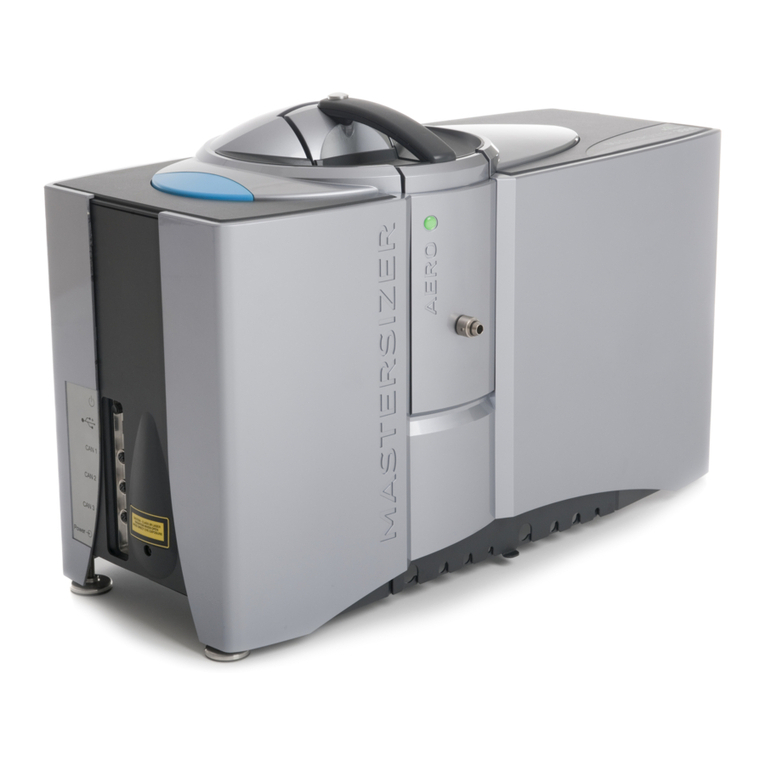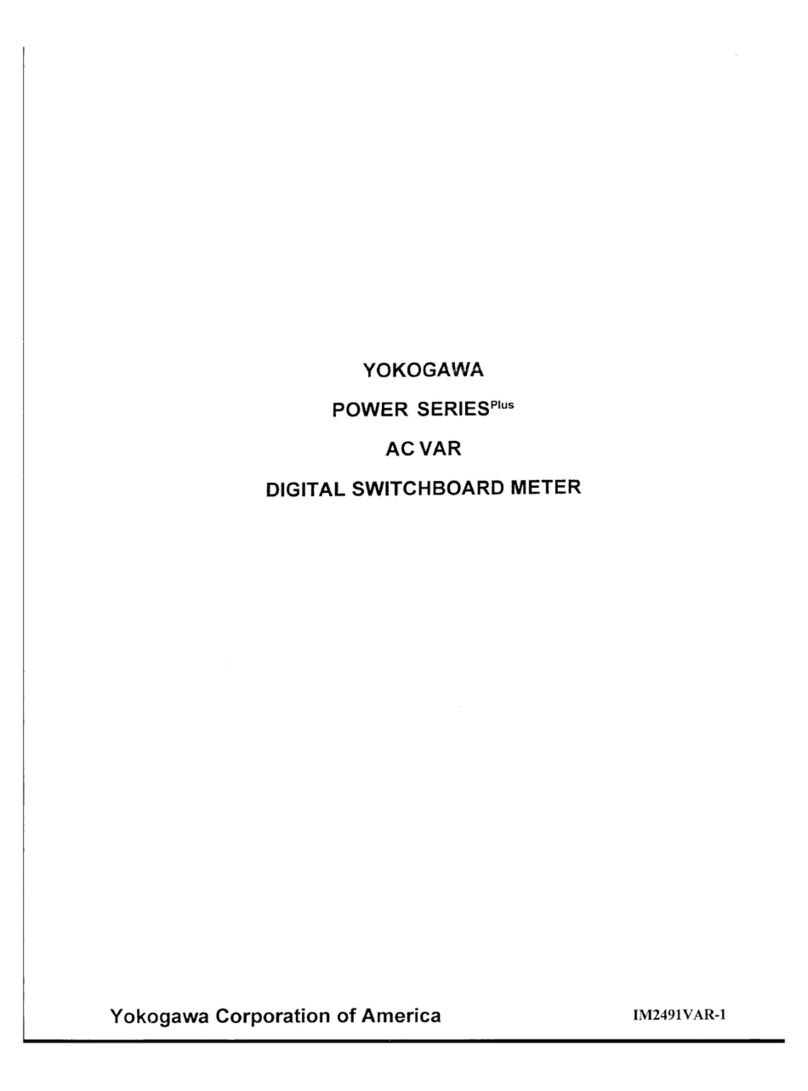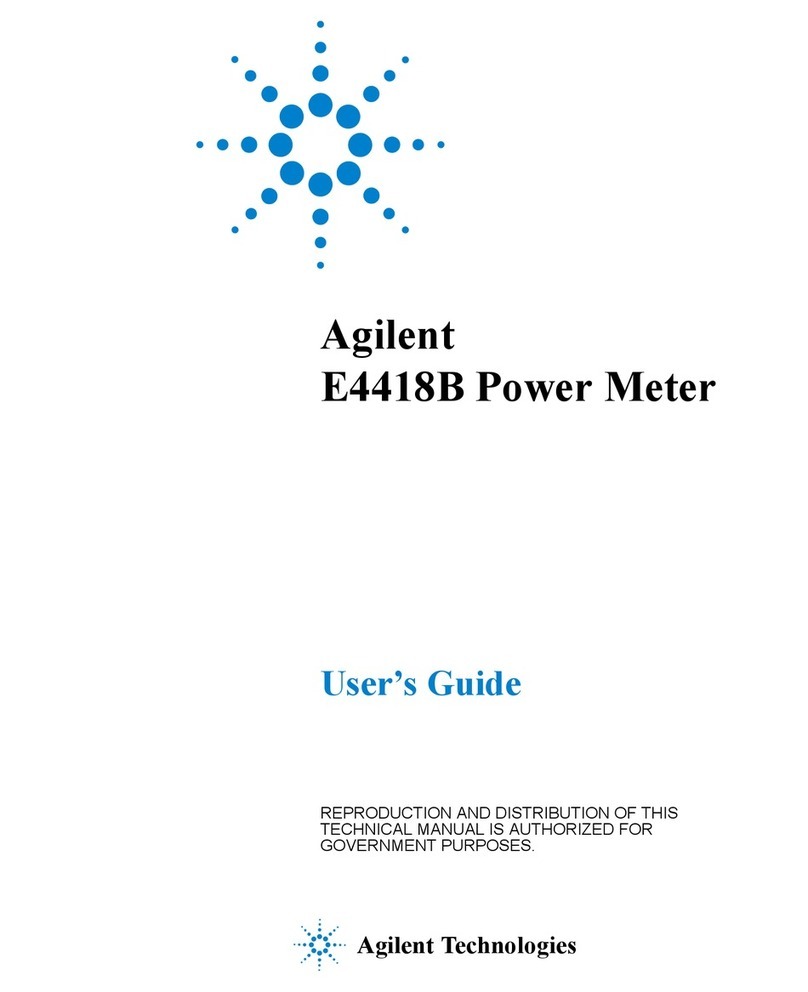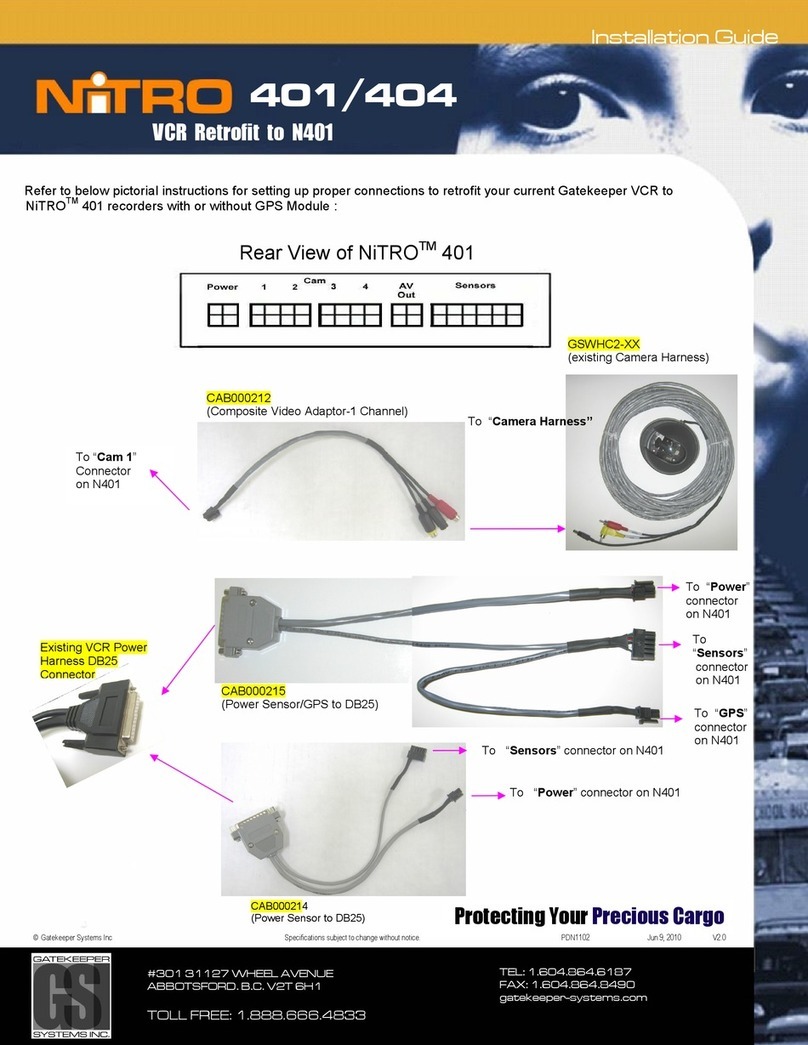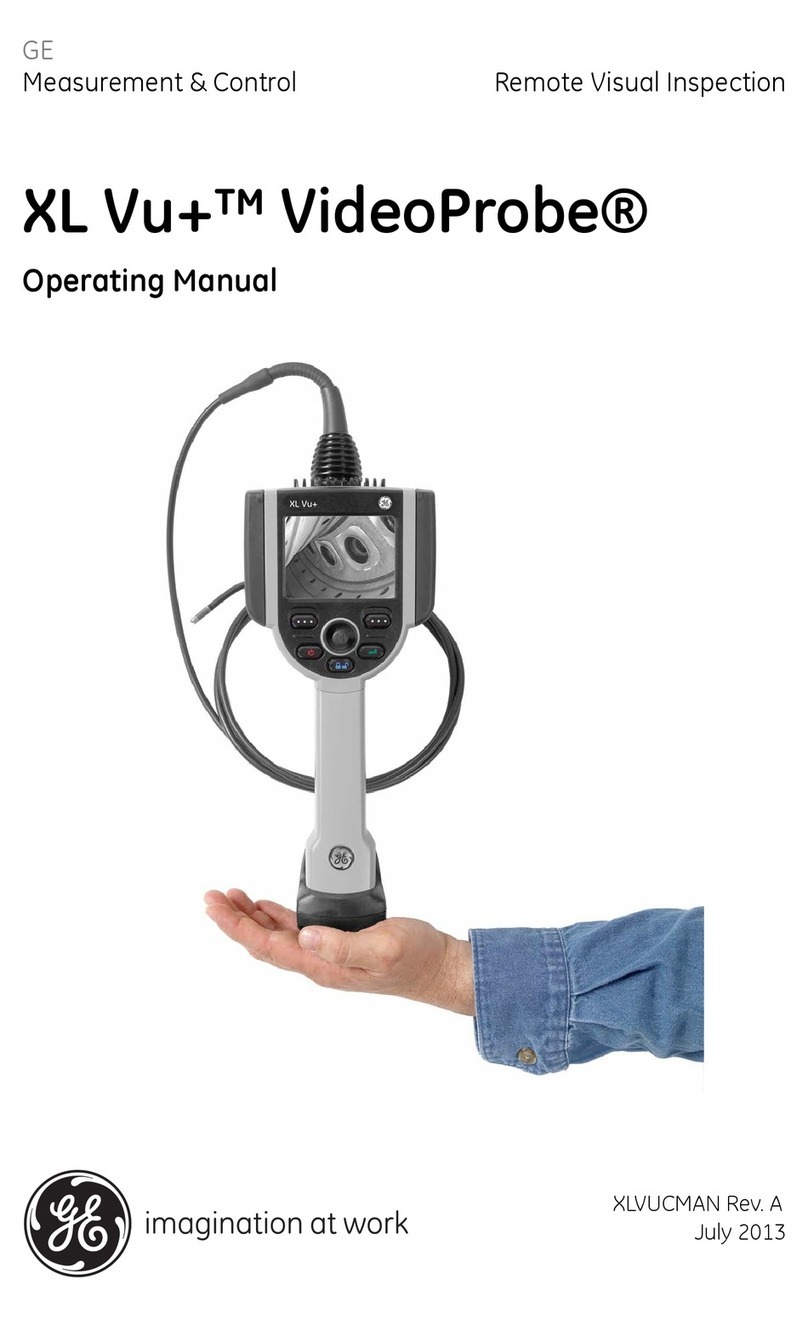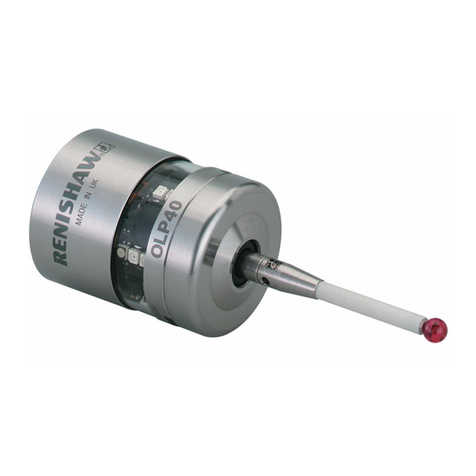Audiotel DetectIV User manual

DETECTIV User Manual
Part No: 2-400-0001

2 AUDIOTEL INTERNATIONAL MN400872 Issue 1 (08/04)
DETECTIV User Manual
AUDIOTEL INTERNATIONAL MN400872 Issue 1 (08/04) 3
© 2004 Audiotel International Ltd
Under the copyright laws, this manual may not be copied, in whole or part, without the written
consent of Audiotel International Ltd.
Every effort has been made to ensure the accuracy of this manual. The instructions and descrip-
tions are accurate at the time of publication. However, succeeding versions of the equipment and
manuals are subject to change without notice. Audiotel assumes no liability for damages incurred
directly or indirectly from errors, omissions or discrepancies between the equipment described
and the manual.
If you have any comments or suggestions on improving this manual please contact Audiotel at the
following address:
Audiotel International
Corby Road
Weldon
CORBY
Northants
NN17 3AR
Fax: +44 (0)1536 266711
or Email us at: [email protected]
DETECTIV
™
is a registered trademark of Audiotel International Ltd
AUDIOTEL™
is a registered trademark of Audiotel International Ltd

2 AUDIOTEL INTERNATIONAL MN400872 Issue 1 (08/04)
DETECTIV User Manual
AUDIOTEL INTERNATIONAL MN400872 Issue 1 (08/04) 3
How to use this manual..................................................................................4
CE MARK EMC COMPLIANCE AND RADIO TYPE APPROVAL...... 5
INTRODUCTION................................................................. 6
GETTING STARTED - ........................................................ 8
Charging the battery.......................................................................................9
Switching the unit ON (and Off) ...................................................................10
Using the controls and selecting options .....................................................11
Setting time & date ......................................................................................12
BASIC OPERATING METHODOLOGY..................................... 13
DETECT ........................................................................................................13
IDENTIFY......................................................................................................13
LOCATE ........................................................................................................ 13
DETECT MODE ............................................................ 14
Selecting a Detector .....................................................................................15
Setting the unit Volume ................................................................................16
Transmitter Detector Alarms ........................................................................16
NLJD Display................................................................................................17
Enabling / Disabling the NLJD ......................................................................17
IDENTIFY MODE.......................................................... 18
Broadband CW Identify screen.....................................................................18
Broadband Burst IDENTIFY screen ..............................................................19
Harmonic Receiver IDENTIFY screen........................................................... 20
NLJD & Metal Detector IDENTIFY screen ...................................................22
LOCATE MODE ............................................................ 25
EVENT LOG................................................................... 26
Alarms ..........................................................................................................27
Snapshots.....................................................................................................27
References ...................................................................................................28
CONNECTION, DOWNLOAD TO A PC ..................................29
ACCESSORY .................................................................. 30
APPENDIX A - BATTERY & I/O ........................................ 32
APPENDIX B - MENU STRUCTURE..................................... 33
Contents

4 AUDIOTEL INTERNATIONAL MN400872 Issue 1 (08/04)
DETECTIV User Manual
AUDIOTEL INTERNATIONAL MN400872 Issue 1 (08/04) 5
How to use this manual
This manual is divided into a number of sections. The
following brief description shows the type of information
presented in each section:
Introduction to DETECTIV – a brief description of DETECTIV and how it works.
Getting Started - Setting up and looking after your DETECTIV – contains a packing list of
the DETECTIV system. Details of the power requirements and battery care. How to set up
DETECTIV ready for operation.
Basic Operation – describes the basic procedures for using DETECTIV. This is not meant to
be an exhaustive description of DETECTIV's capabilities or functionality, merely a quick guide
to allow basic searches to be carried out. The following Mode sections give more details of the
various modes and their use, in relation to the different detectors.
Detect Mode – describes operating in this mode, which uses all of DETECTIV's detectors
simultaneously, and interpreting the multi-detector display.
Identify Mode – describes how to navigate through the different detector's Identify screens and
how to use them to identify whether or not a detected response is a possible threat.
Locate Mode – this section describes how to use DETECTIV to locate accurately the source of
any identied threat.
Event log – Gives details of the three Logs available within DETECTIV - Alarms, Snapshots and
Reference. How entries are generated and what they are used for.
Connection, download to a PC - gives details of how to connect to a PC and download Event log
information.
Appendices - Reference information about the DETECTIV unit, its component parts, controls
and menu structure.

4 AUDIOTEL INTERNATIONAL MN400872 Issue 1 (08/04)
DETECTIV User Manual
AUDIOTEL INTERNATIONAL MN400872 Issue 1 (08/04) 5
Warnings
When operating the equipment within Europe where Type Approval is a legal requirement, all
equipment, including transmitter, receivers, microphones, batteries and aerials must be to type
approved standard in order for the system to remain type approved. Therefore, only equipment
supplied by Audiotel International should be used.
It is the operator's responsibility to operate the equipment only on frequencies licensed to them.
FCC
NOTE This equipment has been tested and found to comply with the limits for a Class
B digital device, pursuant to part 15 of the FCC Rules. These limits are designed
to provide reasonable protection against harmful interference in a residential
installation. This equipment generates, uses and can radiate radio frequency
energy and, if not in-stalled and used in accordance with the instructions,
may cause harmful interference to radio communications. However, there is
no guarantee that interference will not occur in a particular installation. If this
equipment does cause harmful interference to radio or television reception, which
can be determined by turning the equipment off and on, the user is encouraged to
try to correct the interference by one or more of the following measures:
—Reorient or relocate the receiving antenna.
—Increase the separation between the equipment and receiver.
—Connect the equipment into an outlet on a circuit different from that to which
the receiver is connected.
—Consult the dealer or an experienced radio/TV technician for help.
CE MARK EMC COMPLIANCE AND
RADIO TYPE APPROVAL
The CE mark is afxed to the DETECTIV to conrm
compliance with the following European Community
Directives:
Council Directive 89/336/EEC on the approximation of
Laws of Member States relating to Electromagnetic
Compatibility and the following EMC and Radio Type
Approval standards:
EN 300 220-1
EN 300 440-1
EN 301 489-3
EN 300 330-1
EN 60950 LVD

6 AUDIOTEL INTERNATIONAL MN400872 Issue 1 (08/04)
DETECTIV User Manual
AUDIOTEL INTERNATIONAL MN400872 Issue 1 (08/04) 7
INTRODUCTION
DETECTIV is a sophisticated search tool integrating four
detection sensors to provide a more complete and robust
method of detecting electronic eavesdropping devices.
Four tried and tested detection methods: Harmonic receiver, broadband detector, Non-linear
junction detector and metal detector are integrated into one compact, easy to use unit.
Combining four complementary sensor systems together means more effective and efcient
search capability. With just one physical sweep of a target area four separate searches are carried
out. DETECTIV automatically switches between the four sensors using each detection method
in turn, ve times a second, allowing a continuous display of all detector activity.
Each sensor provides information which combines to provide a comprehensive picture of
any concealed targets. DETECTIV presents the multisensor information in a simple, easily
understood bar graph display. Additional expert screens give access to more detailed information
for each of the sensors. Using multiple detector information in this way improves detection and
gives more accurate identication between false alarms and real targets.
The Unit
The DETECTIV unit, shown opposite, is a hand-held case with a paddle shaped search head on
an extendable arm. Controls are grouped next to the handle for convenient thumb operation and
information is presented on a tilt-able TFT LCD touch-sensitive screen.
The input and output ports are grouped together under the tail of the unit along with the battery
compartment. The On /Off switch, audio output and headphone socket are conveniently located
at the top of the unit tail.
Handling
The extendable search head contains all the DETECTIV sensors and during a sweep search
needs to be passed close to all parts of a target area. Rotatable on two axis the head can be
twisted to provide the best attitude and position for searching most surfaces. The extendable arm
provides convenient access for the difcult to reach parts of a typical target area, for example,
ceilings and under desks. To minimise strain the unit has provision for a shoulder strap allowing
DETECTIV to be handled like a guitar and is designed to be balanced with the search head arm
extended approximately half way. The tail of the unit is also designed to provide a convenient
handle to control the unit when searching high surfaces.

6 AUDIOTEL INTERNATIONAL MN400872 Issue 1 (08/04)
DETECTIV User Manual
AUDIOTEL INTERNATIONAL MN400872 Issue 1 (08/04) 7
Shoulder strap xing points
(mounted on both left and right sides)
Headphone socket
Battery Comparment
Input/output sockets
Search Head
Extendable Arm
Tiltable LCD touch- sensitive Display
Control keypad
Hand grip
Battery charge indicators
On/Off switch
Loudspeaker

8 AUDIOTEL INTERNATIONAL MN400872 Issue 1 (08/04)
DETECTIV User Manual
AUDIOTEL INTERNATIONAL MN400872 Issue 1 (08/04) 9
Out of the box
DETECTIV can be ordered with a number of accessories. The actual specication of the
accessories will vary from country to country dependent on supply voltage.
The Basic DETECTIV (order no: 2-400-0001) consists of:
DETECTIV unit
Li-Ion battery pack (7.2V)
Multi-media Memory card
DETECTIV manual
The accessories which can be ordered separately are:
Item Order code
Li-ion battery pack 2-400-0002
AC/DC Power adaptor 2-400-0003
Mains power lead (dependent on country)
Shoulder strap 2-400-0005
Pelicase with foam inserts 2-400-0006
Headphones (folding) 2-400-0007
Stand-alone Li-ion battery charger 2-400-0008
Multi-media memory card 2-400-0009
Lightweight carry case 2-400-0012
Test target kit 2-400-0013
GETTING STARTED -
This section covers setting up DETECTIV ready for
operation with a basic description of the controls and how
to use DETECTIV to locate eavesdropping devices.

8 AUDIOTEL INTERNATIONAL MN400872 Issue 1 (08/04)
DETECTIV User Manual
AUDIOTEL INTERNATIONAL MN400872 Issue 1 (08/04) 9
Charging the battery
The DETECTIV battery packs are supplied without being charged. To operate the DETECTIV
you must rst charge the internal battery.
Remove the battery door from the unit and insert the battery, (the end with the four
contacts goes in rst), into the battery compartment.
Replace the battery compartment door and place the unit on charge by connecting an
appropriate AC/DC adaptor to the Charger socket. When successfully connected to a
live power supply the red LED next to the On/Off switch lights to indicate the battery
is being charged.
Note It is not necessary to switch DETECTIV On to charge the battery.
When the battery is fully charged, the red LED turns off and the green LED lights. The unit is now
ready for use.
Battery
The Internal rechargeable Lithium Ion battery pack gives approximately 2 hours continuous use;
Automatically recharged when external power is applied to the DETECTIV via an external AC/
DC Adaptor. Internal protection circuitry protects the battery. If for any reason the battery suffers
any transient fault such as short-circuit, overcharging or deep discharge, the pack will shutdown. It
will remain in this state until reactivated by connection of an external AC/DC Adaptor.
When the battery charge is low a battery icon is displayed on the display screen . This will
indicate there is approximately enough power to keep DETECTIV operating for a further 10
minutes. If the battery is completely exhausted the display will icker and fail.
Inserting the battery
Connecting an AC/DC adaptor

10 AUDIOTEL INTERNATIONAL MN400872 Issue 1 (08/04)
DETECTIV User Manual
AUDIOTEL INTERNATIONAL MN400872 Issue 1 (08/04) 11
Multi-media Memory card
A Multi-media memory card is used to allow screen shots and log information to be stored and
transferred to a PC for further analysis and reporting. DETECTIV can be operated without a
multimedia memory card installed although you will be unable to save screen shots or any log
records.
Note DETECTIV should be off when a ash memory card is inserted into the
memory card slot. The contacts on the memory card should be facing away from
the accessory socket when inserting the Mulitmedia card.
The number of screen Snapshots that can be stored is displayed in a Snapshot counter sc in the
upper section of the display on all DETECT and IDENTIFY screens. If no memory card is installed
the Snapshot counter is crossed out in red sc .
Switching the unit ON (and Off)
To switch the unit ON press and hold the ON / OFF switch for a second or two.
The Unit performs an initialising sequence displaying the message 'Please Wait'.
Note During the initialising sequence the various detectors are calibrated. To ensure the
best performance from DETECTIV the search head should be kept clear of any
potential targets during this calibration.
Once the initialising sequence is completed the Main Menu is displayed.
To switch the unit OFF press and release the On/Off switch.
The back light will turn off immediately although a residual image may linger on the screen for a
few moments.
Inserting a memory card
Card contacts on side away
from accessory socket

10 AUDIOTEL INTERNATIONAL MN400872 Issue 1 (08/04)
DETECTIV User Manual
AUDIOTEL INTERNATIONAL MN400872 Issue 1 (08/04) 11
Using the controls and selecting options
To navigate around the various screens and select options a combination of keypad controls and
on-screen buttons are used.
Controls
The navigation controls are arranged up, down, left and right in the centre of the keypad. Their use
depends on the current screen and the screen item selected. Usually the left and right controls
change the current selection left or right and the up and down controls adjust levels (alarm levels,
power levels, etc.)
The control is primarily used to toggle between setting the sound volume and the current
selection. Sound volume can only be set on those screens that display the sound icon in the
DETECT and IDENTIFY modes (see under Setting the Unit volume in the DETECT mode section
of this manual)..
Note On those screens where setting the sound volume is not applicable, for
convenience, this control also duplicates the most common screen option.
The 3control is used to return back up to the parent screen of the current screen.
The p control is used in the IDENTIFY mode to pause the display and capture screen images for
later analysis.
Press p once to Pause the display
' >>> P a u s e d <<< ' appears on the screen display
press p a second time to save a screen shot to the Snapshot Log
To cancel the Pause press the 3control.
Screen Options
The touch sensitive screen is used to select items in the main menu and choosing a detector in
the Detect screen as well as operating various screen buttons that appear at the bottom of the
screen.
The NLJD Trigger control is used to turn
the NLJD On or Off.
(See under Enabling /Disabling the NLJD
later in this manual).

12 AUDIOTEL INTERNATIONAL MN400872 Issue 1 (08/04)
DETECTIV User Manual
AUDIOTEL INTERNATIONAL MN400872 Issue 1 (08/04) 13
Setting time & date
From the Main menu select CONFIGURE by either:
Touch the CONFIGURE icon on the screen
or
use the Left and Right controls on the keypad to highlight the CONFIGURE icon, then
press the button to select.
The CONFIGURE screen is displayed.
The LEFT and RIGHT controls on the keypad move the highlight (underscore) between the digits
in the day/month/year/hour/minute display. The Up and Down controls increase (UP) or decrease
(DOWN) the number.
Highlight the digit you wish to change using the Left and Right controls
Increase or decrease the selected digit using the up and down controls.
Once the time and date is correct, touch the ACCEPT on-screen button to set the
time and date.
Your DETECTIV unit is now ready for use.

12 AUDIOTEL INTERNATIONAL MN400872 Issue 1 (08/04)
DETECTIV User Manual
AUDIOTEL INTERNATIONAL MN400872 Issue 1 (08/04) 13
BASIC OPERATING METHODOLOGY The basic operating method for using the DETECTIV follows three sequential steps.
DETECT
With the DETECTIV displaying either the Main menu or the Detect display (Select DETECT
from the main menu) move the DETECTIV unit around the area to be secured.
Note DETECTIV is intended to nd suspicious devices within a target area. To avoid
excessive interference the sensors are optimised to limit the range at which
devices are detected. To search effectively the search head needs to pass closely
to all possible hiding places.
The DETECT mode utilises all the DETECTIV detectors simultaneously and should ensure that,
as the unit search head is swept over areas of likely concealment, the opportunities for detecting
a target are maximised.
When a large response is noted from one or more of the detectors it can be investigated further
using the Identify features for the appropriate detector.
IDENTIFY
The IDENTIFY stage involves using the various tools built into each one of the DETECTIV
detectors to try and identify whether or not the detected response is a possible threat.
If it seems likely that the detected response is a threat then the unit can move into the LOCATE
mode.
LOCATE
The LOCATE stage involves moving the DETECTIV around the suspect area using both the
display and the audio output to locate the source of the detected response.

14 AUDIOTEL INTERNATIONAL MN400872 Issue 1 (08/04)
DETECTIV User Manual
AUDIOTEL INTERNATIONAL MN400872 Issue 1 (08/04) 15
From the Main menu select DETECT by either:
Touch the DETECT icon on the screen
or
use the Left and Right controls on the keypad to highlight the DETECT icon, then
press the button to select.
The DETECT screen is displayed.
This is the basic mode of operation for the DETECTIV unit. In this mode all four detectors
are active at the same time. Each detector is designed to detect a specic type of target and is
represented with a vertical bar graph which increases or decreases in height in relation to the
detected signal(s).
The detectors are divided into 2 groups: Transmitter detectors and Device detectors
Transmitter Detectors
On the left of the screen these detectors respond to active radio transmissions.
Broadband CW will respond to continuous transmissions both narrow band (e.g. analogue
‘bug’) and broadband continuous transmissions (e.g. analogue video
transmissions)
Broadband Burst will respond to intermittent or burst transmissions (e.g. digital mobile
phones or frequency hopping devices)
Note because these two detectors are broadband in nature they only
indicate the strongest signal detected.
Harmonic Receiver will respond to continuous transmissions with better sensitivity than the
Broadband detectors, the harmonic receiver will also have the ability to
cancel out background signals and allow signals other than the strongest
signal to be captured.
DETECT MODE
DETECT mode icon
Detector selection
Indicator bar graphs
Sound Volume (see under
setting the unit Volume)
Snapshot counter
Harmonic receiver
mode indicator Alarm icons
appear here
IDENTIFY mode button LOCATE mode button

14 AUDIOTEL INTERNATIONAL MN400872 Issue 1 (08/04)
DETECTIV User Manual
AUDIOTEL INTERNATIONAL MN400872 Issue 1 (08/04) 15
Device Detectors
On the right of the screen these two detectors respond to electronic devices whether they are
active or inactive.
Metal detector will respond to inactive well screened metal targets with a reasonable cross
sectional area (6cm x 6cm) at a range of approx. 10cm through brick and
CELCON block.
NLJD will respond to electronic targets (active / inactive) provided they are not
well screened against the NLJD signals. The Bar graph display shows both
2nd (red) and 3rd (green) harmonic return signals
Selecting a Detector
To select a detector, either
Touch the relevant detector icon on the screen
or
use the Left and Right controls on the keypad to highlight the relevant detector icon.
The currently selected detector is identied in the upper part of the DETECT screen and
highlighted by a RED box around the detector icon.

16 AUDIOTEL INTERNATIONAL MN400872 Issue 1 (08/04)
DETECTIV User Manual
AUDIOTEL INTERNATIONAL MN400872 Issue 1 (08/04) 17
Setting the unit Volume
The audio output in the DETECT screen is a form of ‘Geiger’ click which rises and falls in pitch in
relation with the level of the currently selected detector bar graph.
The sound icon is displayed towards the upper right corner of the screen in all screens of DETECT,
IDENTIFY or LOCATE modes. The sound volume can only be adjusted when this icon is displayed.
To adjust the sound volume
press the control on the keypad.
The sound volume indicator next to the sound icon is highlighted with a RED selection box.
Use the LEFT and RIGHT controls to decrease or increase the unit VOLUME.
Pressing any on-screen selection will automatically deselect the sound selection.
Alternatively press the control to deselect the sound selection.
Transmitter Detector Alarms
The transmitter detector bar graphs include alarm thresholds. These are indicated as red bars
across the vertical bar graphs.
To set an alarm threshold:
select the relevant transmitter detector
Use the UP and DOWN controls on the keypad to increase or decrease the alarm
threshold.

16 AUDIOTEL INTERNATIONAL MN400872 Issue 1 (08/04)
DETECTIV User Manual
AUDIOTEL INTERNATIONAL MN400872 Issue 1 (08/04) 17
When the level for any of the transmitter detectors exceeds the corresponding alarm threshold
the relevant bar graph will turn RED for approx. 5 seconds, this is accompanied by the alarm icon
for the relevant detector also being displayed in the top right hand corner of the screen also for
approx. 5 seconds.
If a multimedia card has been installed (see under Multi-media memory card in the Getting Started
part of this manual ) a time and date stamped entry of the alarm is also automatically registered in
the EVENT LOG (see the Event Log section later in this manual for further details).
NLJD Display
The NLJD bar graph shows two bars. These indicate the return signals received at the 2nd and
3rd harmonic frequencies.
The red bar indicates the 2nd harmonic signal and
the green bar shows the 3rd harmonic signal. The relative strengths of these two returns is used
as an indicator of the type of Non-Linear junction being detected.
Enabling / Disabling the NLJD
The TRIGGER control can be used to enable / disable the NLJD in both the DETECT screen and
the NLJD IDENTIFY screen.
To enable / disable the NLJD detector
Press the Trig control on the keypad.
When the NLJD is disabled the NLJD bar graph is ‘greyed’ out.
signal below threshold:
Bar remains Green.
signal above threshold:
Bar turns Red and relevant
alarm icon displayed.

18 AUDIOTEL INTERNATIONAL MN400872 Issue 1 (08/04)
DETECTIV User Manual
AUDIOTEL INTERNATIONAL MN400872 Issue 1 (08/04) 19
IDENTIFY MODE
This mode is used to positively identify a suspect signal as
a potential eavesdropping device within the search area.
To select the IDENTIFY mode
From the Detect screen
select the appropriate detector
press the IDENTIFY on-screen button.
The IDENTIFY screen for the selected detector is displayed.
Broadband CW Identify screen
The Broadband CW Identify screen shows a scrolling display of received broadband signal
strength against time.
The time scale can be changed using the Zoom In and Zoom Out on-screen buttons.
This increases or decreases the rate at which the display scrolls.
The audio output in this mode is broadband AM (Amplitude Modulation).
Alarm thresholds remain active in this mode and can be adjusted using the up and
Down controls.
When the alarm threshold is exceeded the appropriate alarm icon is displayed in the top right hand
corner of the display and an entry is made in the EVENT LOG.
time
signal strength
alarm threshold

18 AUDIOTEL INTERNATIONAL MN400872 Issue 1 (08/04)
DETECTIV User Manual
AUDIOTEL INTERNATIONAL MN400872 Issue 1 (08/04) 19
Broadband Burst IDENTIFY screen
The Broadband Burst Identify screen is very similar to the Broadband CW Identify screen, and also
shows an oscilloscope type of display of received broadband burst signal strength against time.
The time scale can be changed using the Zoom In and Zoom Out on-screen buttons.
This increases or decreases the rate at which the display scrolls.
The audio output in this mode is broadband AM.
Alarm thresholds remain active in this mode and can be adjusted using the up and
Down controls.
When the alarm threshold is exceeded the appropriate alarm icon is displayed in the top right hand
corner of the display and an entry is made in the EVENT LOG.
In addition this mode also compares the received signals against a library of known signal
signatures. If the signal is recognised the signal type (e.g.: GSM) is also displayed in the top left
hand side of the screen.

20 AUDIOTEL INTERNATIONAL MN400872 Issue 1 (08/04)
DETECTIV User Manual
AUDIOTEL INTERNATIONAL MN400872 Issue 1 (08/04) 21
Harmonic Receiver IDENTIFY screen
The Harmonic Receiver Identify screen displays the radio frequency spectrum in a compressed
form.
To change the span of the Spectrum displayed use the Zoom In and Zoom Out on-
screen buttons.
The current zoom level is indicated in the upper part of the screen above the spectral display.
As in the broadband Identify screens the Alarm thresholds remain active
Listening to a captured radio signal - Auto Tuning
When Auto Tune is selected the cursor (and hence the listening receiver) is automatically tuned to
the highest level signal on the screen.
To turn Auto tuning On or Off press the Auto Tune on-screen buttons.
Auto tune is ON when the button appears down (the Auto Tune text appears black)
and the tuning cursor is displayed in blue.
Note Manual tuning is inactive in Auto Tune.
Manual Tuning
The audio output for the Harmonic Receiver Identify stage is FM (Frequency Modulation). The
actual signal being listened to is identied with green tuning cursor cross-hairs.
To select a particular signal to listen to either:
Touch the display screen on the required signal peak
or
Use the LEFT and RIGHT controls to move the cursor left or right respectively.
The cursor can also be dragged using a nger to drag across the touch screen
Note: The harmonic receiver captures the RF spectrum (10MHz to 10GHz) in four bands
(approx. 2.5GHz wide), therefore when scanning rapid clicking will be heard as the
receiver switches through the bands in sequence.
This manual suits for next models
1
Table of contents
Popular Measuring Instrument manuals by other brands
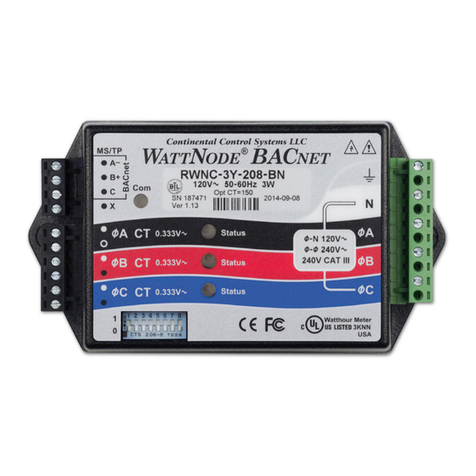
CONTINENTAL CONTROL SYSTEMS
CONTINENTAL CONTROL SYSTEMS WattNode BACnet WNC-3Y-208-BN installation manual
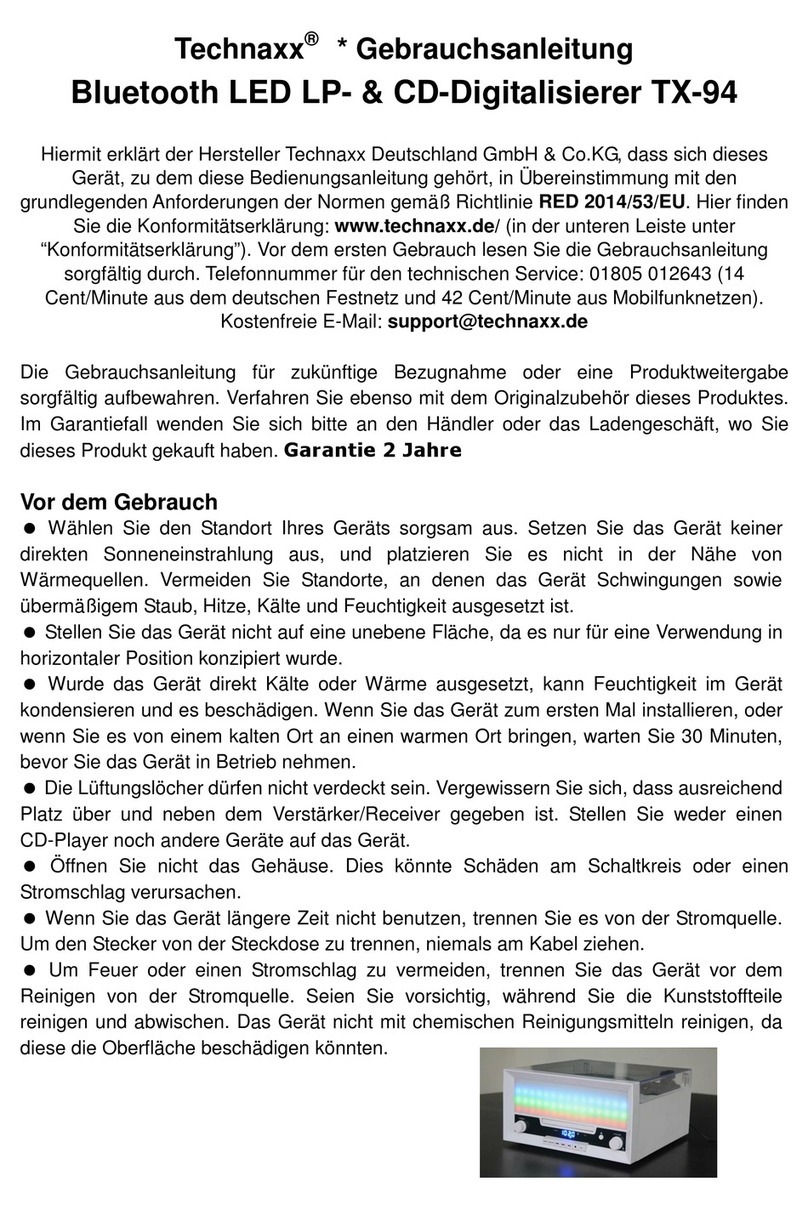
Technaxx
Technaxx TX-94 user manual

Vega
Vega VEGAPULS 64 operating instructions
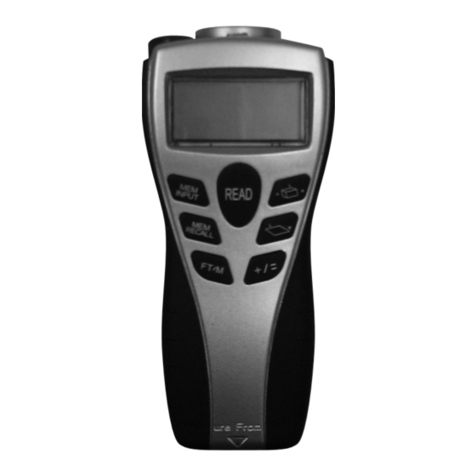
Pittsburgh
Pittsburgh Pittsburgh Laser Range Finder Instructions and precautions

SmarTire Systems
SmarTire Systems GENII Reference manual
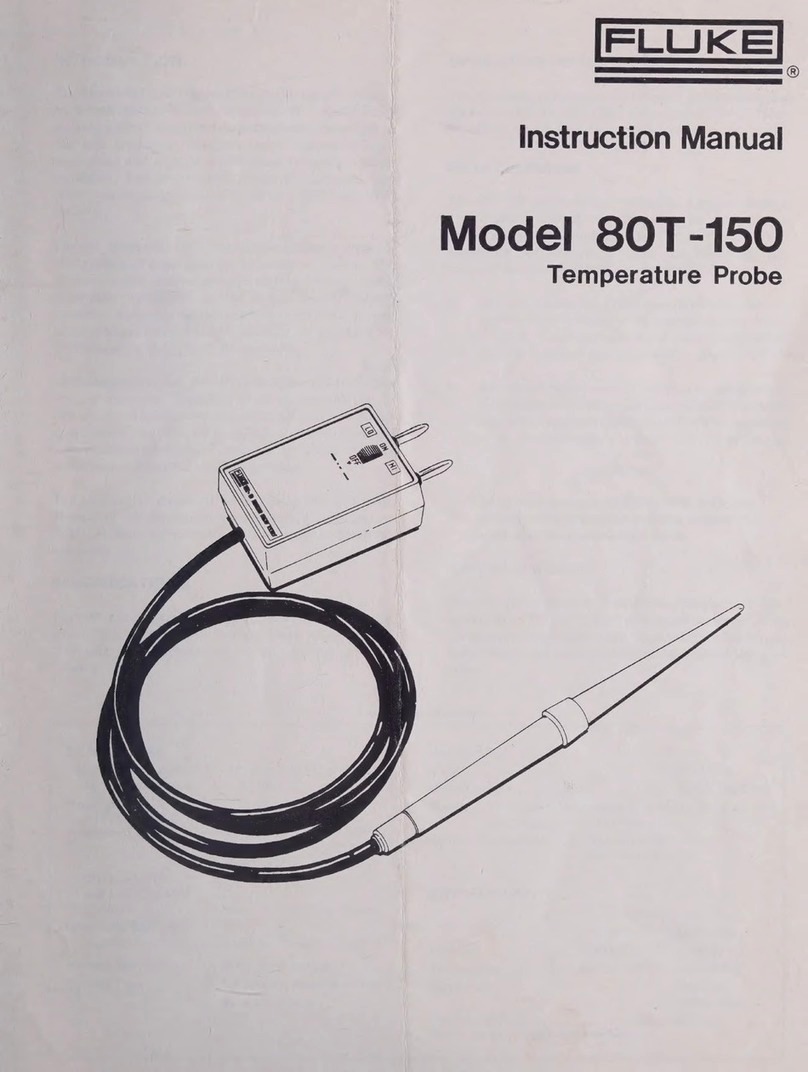
Fluke
Fluke 80T-150 instruction manual
